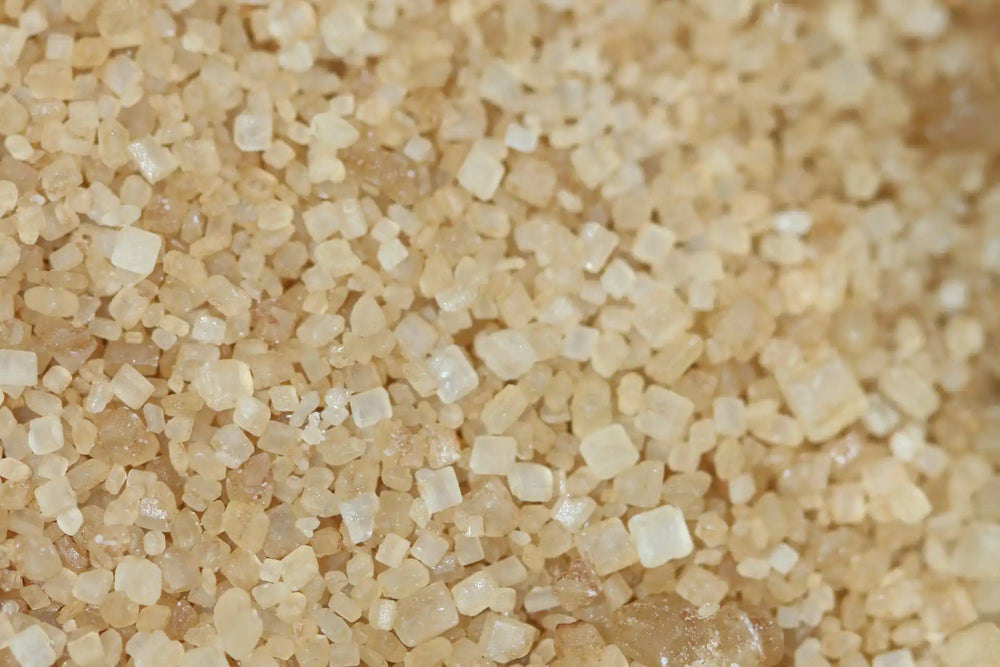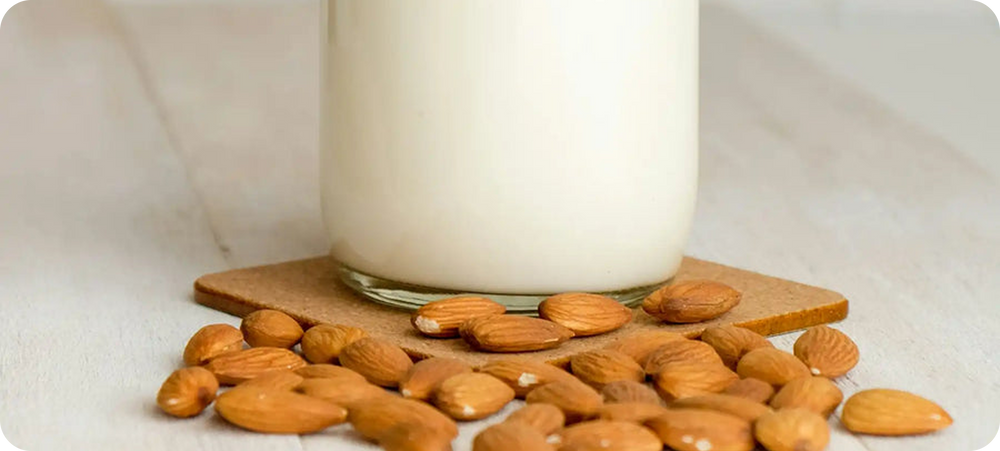
Are you looking to shake up your meal and dessert game while boosting your health? You're in the right place! Almond flour is more than a trend; it is a popular alternative to traditional wheat flour and a powerhouse of nutrition that can transform your dishes.
Almond flour is packed with protein, fiber, and healthy fats and is your ticket to a healthier lifestyle. It is also gluten-free, low in carbs, and rich in vitamins and minerals.
If you want to incorporate almonds in your recipes for breakfast, lunch, or dinner, read more to discover the myriad health benefits this superfood offers. Let's explore the world of almond flour and see how it can elevate your health and culinary experiences.
What is Almond Flour?
Almond flour is a high-protein flour made from ground almonds. It's become popular in recent years, especially among those mindful of a balanced, nutritious diet.
When almonds are processed into flour, they retain all the benefits of raw almonds. These include hefty protein, fiber, healthy fats, vitamins, and minerals. When it comes to protein, almond flour packs in more than its traditional wheat counterpart. Every quarter cup of almond flour has 6 grams of protein, compared to only 3.5 grams in traditional wheat flour.
Almond flour is also gluten-free, making it a hero for those with celiac disease or gluten sensitivity. If you're watching your carb intake, it's beneficial to note that almond flour is also lower in carbs.
Nutritional Value of Almond Flour
Aside from their tasty and addictive flavor, almonds are rich with a natural value that can be used for your healthy diet. It's among the healthiest flours, given its low carbohydrate content and high protein profile. A quarter cup of almond flour contains:
- 6 grams of protein
- 14 grams of fat
- 6 grams of carbohydrates
- 3.5 grams of fiber
Here's a sneak peek at these figures in a tabulated form:
|
Nutrient |
Amount Per Quarter Cup
|
|---|---|
|
Protein |
6 grams |
|
Fat |
14 grams |
|
Carbohydrates |
6 grams |
|
Fiber |
3.5 grams |
These figures are impressive, considering they come from just a quarter cup of almond flour. Almond flour isn't just a "health food" fad. It's a nutrition powerhouse deserving of a regular slot in your pantry.
Almond flour's high protein content benefits muscle build-up, making it an ideal fit for athletes and fitness enthusiasts. Besides, the fiber content aids digestion and promotes a feeling of fullness, reducing overeating tendencies.
Considering these factors, incorporating almond flour into your meals and desserts is quite a good deal. Not only will it enhance the taste of your dishes, but it'll also significantly enrich their nutritional content, where you add a punch of nutrients to your meals.
Health Benefits of Almond Flour
In addition to its impressive nutritional content, almond flour offers several other health benefits that make it a great addition to meals and desserts. Consuming almond flour can significantly improve your health outcomes in the long run. Let's dig into the specifics now.
One of the great things about almond flour is its ability to help you maintain a healthy blood sugar level. This is because it's low in carbohydrates and high in healthy fats and fibers. The fiber content slows down the process of carbohydrate consumption, hence reducing blood sugar spikes after meals.
Besides, almond flour is gluten-free, an excellent option for people with Celiac disease or anyone following a gluten-free diet.
Although almond flour is high in fat, it primarily contains monounsaturated fats—the healthy kind that lowers harmful cholesterol levels, lessening the risk of heart disease.
If you're looking to build muscle, almond flour's protein content shouldn't be underestimated. A quarter-cup serving of almond flour contains 6 grams of protein. These high levels of protein can aid in muscle repair and growth, especially when combined with regular exercise.
In addition to the tangible benefits, almond flour adds a nutty flavor and a chewy texture to dishes, enhancing the taste and gastronomic experience of meals.
Almond flour's healthy outlook truly makes it a versatile and valuable addition to your pantry. So, incorporate it into your recipe repertoire for a seamless blend of health and flavor. For you to have more ideas, check out our starter box for your daily healthy addiction with almonds!
How to Incorporate Almond Flour in Meals and Desserts
Almond flour is a versatile and nutritious ingredient that can elevate savory meals and sweet desserts. It also packs many health benefits and will elevate the taste and texture of your dishes. How do you add almond flour to your food? Here are a few simple yet effective ways to do that.
Swapping standard wheat flour in your recipes with almond flour is an easy first step. For instance, if a recipe demands a cup of regular flour, consider using ¾ to 1 cup of almond flour instead. Remember, because almond flour is highly absorbent, you might need to adjust your liquid ingredients accordingly.
Invest in some cookbooks focusing on gluten-free and vegetable recipes. These resources will provide many ideas for incorporating almond flour into everything from savory dishes to delectable desserts.
You may be whipping up a batch of homestyle pancakes or baking a classic banana bread. Half the wheat flour can be replaced with almond flour for these treats, enhancing both the nutritional profile and flavor.
Another avenue to explore is using almond flour as a thickening agent in soups and stews. Its delicate, nutty flavor pairs wonderfully with various ingredients and cuisines.
Finally, almond flour is a breadcrumb substitute for a light and crisp coating. Whether chicken parm or eggplant slices, this gluten-free alternative will achieve a delightful crunch without the carbs!
Each of these tips encourages the use of almond flour, drawing you a step closer to a healthier and gastronomically satisfying lifestyle. Incorporating almond flour content in your meals and desserts is a choice you won't regret. We’ve also got you covered with our curious box if you want a taste of sweet, healthy almond!
Delicious Recipes using Almond Flour
Inviting almond flour into your kitchen opens a world of nutritious and savory possibilities. Unlike other flours, almond flour bestows extra crunch, flavor, and a unique texture that makes your food far from ordinary. Have you tried almond flour pancakes or almond flour banana bread?
How about soups and stews thickened with the smooth nuttiness of almond flour? The experimentation options are endless.
Have you ever craved for a gluten-free pizza? Voila! Almond flour comes to your rescue. Mix it with your favorite seasonings and olive oil to create a delicious, crispy crust. Top it with colorful, nutrient-rich veggies and a sprinkle of mozzarella.
Dessert enthusiasts, brace yourself for the charm of almond flour brownies. Combine almond flour, cocoa powder, and a dash of vanilla extract for a decadent twist on this classic treat. You'd be surprised at how intensely chocolatey it can be!
Do you love breaded crunchiness in your meals but hate the carb load? Use almond flour as a coating for your chicken or fish. It's lighter than breadcrumbs, but it doesn't compromise the crispiness.
Remember, practice makes perfect. Don't shy away from experimenting with these recipes. Allow your culinary creativity to flow, and discover more ways to incorporate almond flour into your meals. The dining table conversation is always about almond flour on your pantry shelves. Discover more healthy snacks with our healthy discovery box if you are on a picnic, date, or event!
Conclusion
You've seen how almond flour can transform your meals and desserts, making them healthier and tastier. By swapping out traditional flours for almond flour, you're adding a nutty, rich flavor to your dishes and boosting their nutritional profile. The possibilities are endless, from pancakes to pizza crusts to soups to guilt-free brownies. So, why not give your kitchen a healthy makeover? Start experimenting with almond flour today and experience the delightful difference in your cooking. Remember, it's not just about making your dishes more nutritious; it's about exploring new flavors and textures. Enjoy the journey of culinary creativity with almond flour!
What can I cook using almond flour?
Almond flour can cook various dishes, including pancakes, banana bread, soups, stews, and pizza crusts. It is also excellent for baking, particularly for almond flour brownies.
Does almond flour offer a healthy alternative to other flours?
Yes, almond flour can be a healthier alternative. It contains less carbohydrates, fiber, and protein, making it a favorite among those following protein rich or gluten-free diets.
What can almond flour be used as a substitute in recipes?
Almond flour can be substituted for breadcrumbs when coating chicken or fish, providing a lighter alternative. It can also replace conventional wheat flour in baking for gluten-free recipes.
How does almond flour enhance nutrition and flavor?
Almond flour enhances nutrition and flavor by providing a high protein and fiber source while adding a hint of sweetness and a nutty flavor to your dishes.
FAQ
The vegan milks highlighted in this article are coconut, oat, soy, and almond milk.
Related posts
-

What Is The Difference Between...
When it comes to sweetening your morning coffee or baking your favorite dessert, you've likely re...
-

What Are The Best Vegan...
You're a baking enthusiast, but you recently turned vegan. Now you're wondering how to replace th...
-

Top Vegan Butter Substitutes for...
Have you ever considered baking that delicious cake but run out of butter? Or are you trying to s...



